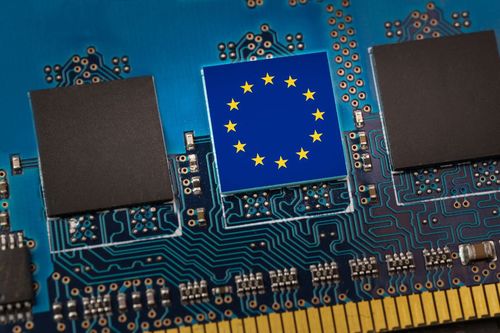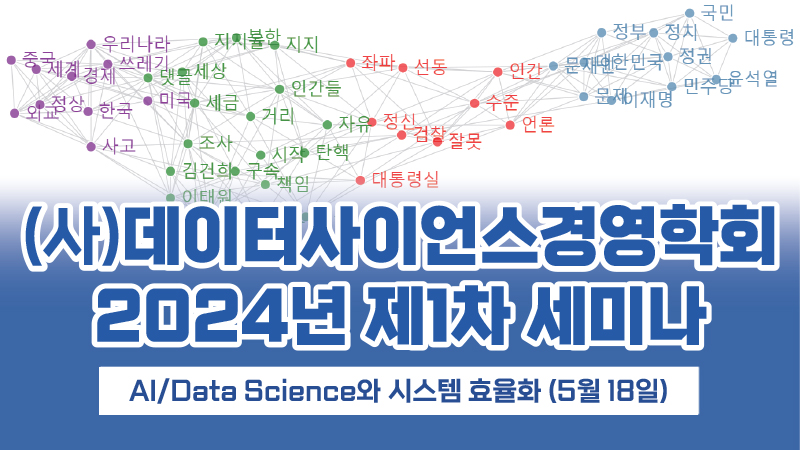[해외DS] EU, AI 기술 책임 규정 강화할 것이라 밝혀
EU 제조물 책임 지침 개정안 제안돼, 피해자 보호 확대된다 베라 요우로바 EU 집행위원회 부위원장, 개정안이 ‘기존 기술과 동일한 고객 보호를 실현하고 EU 시장의 법적 확실성 보장’한다고 전해 소프트웨어연합, 개정안 우려 표하며 AI 책임에 대한 위험 접근 방식 채택할 것 권고
[해외DS]는 해외 유수의 데이터 사이언스 전문지들에서 전하는 업계 전문가들의 의견을 담았습니다. 저희 데이터 사이언스 경영 연구소 (MDSA R&D)에서 영어 원문 공개 조건으로 콘텐츠 제휴가 진행 중입니다.

앞으로는 AI 시스템으로 피해를 입은 소비자가 보다 쉽게 법적인 대응을 할 수 있게 될 전망입니다. 최근 새롭게 제안된 EU의 제조물 책임 지침 개정안 덕분인데요, 입증 부담 완화를 비롯해 피해자에 대한 보호를 확대하는 내용이 포함됐습니다.
개정안 내용을 구체적으로 보면 우선 법적 절차가 간소화됐습니다. ‘인과관계 추정’ 도입으로 “(해당 AI 기술에 피해와) 관련된 결함이 존재하고 그 인과관계가 합리적으로 보인다”면 피해자가 그 AI 기술이 자신에게 어떻게 피해를 입혔는지를 법정에서 증명할 필요가 없게 됐습니다. AI 기술은 복잡한 측면이 있기에 피해자의 부담이 크게 완화될 것입니다. 하지만 반대로 피고의 입장에서는 굉장히 나쁜 소식인데요, 그 증명 책임이 이제 피고에게 넘어가기 때문입니다.
또한 회사와 공급업체를 뒤져 증거를 찾을 수 있는 권한이 도입되면서 회사에 법적인 보상 책임을 물릴 방안이 다양해질 것으로 보입니다. 이 권한은 고위험 AI(AI의 위험도 분류 기준 역시 이번 AI 법에 포함될 예정으로, 현재는 입법권자들이 내용을 논의하고 있습니다.)와 연관된 경우에 인정됩니다.
EU 집행위원회 부위원장으로 가치 및 투명성을 담당하고 있는 베라 요우로바(Věra Jourová)는 “우리는 AI 기술이 EU에서 활성화되기를 바랍니다.”라며 “이를 위해서는 사람들이 디지털 혁신을 신뢰해야 합니다. AI의 민사적 책임과 관련된 이번 개정안은 고객이 AI 때문에 입은 피해를 구제받을 수 있는 수단을 제공, 기존의 기술과 동일한 수준의 고객 보호를 실현하고 (EU) 내부 시장의 법적인 확실성을 보장합니다.”라고 말했습니다.
각국의 민사 소송 체제 변화
EU에 따르면 이번 개정안은 제조물 책임 지침을 현대화하려는 시도입니다. EU는 또 AI를 비롯한 새로운 기술과 혁신에 대응하기 위해 “현재 있는 규칙을 강화”할 계획이라고 밝혔습니다.
법무법인 오스본 클라크(Osborne Clarke)에서 AI 책임자를 맡고 있는 존 바이어(John Buyers)는 이러한 변화가 기술 문서의 작성 방식 자체를 바꿀 수 있다고 주장했습니다. 바이어는 사건의 결과가 해당 사건의 청구인이 청구를 공표하기 위해 피고의 규제 준수 문서를 확보하는지에 따라 달라질 수 있다는 견해를 갖고 있습니다.
바이어는 “AI 업계는 새로운 법을 준수하면서 이익을 가장 잘 보호할 수 있는 방법을 찾기 위해 오랫동안 고민해야 할 것임은 분명합니다. 적어도 법이 고위험으로 분류한 애플리케이션이라면요.”라고 덧붙였습니다.
또한 바이어는 개정안이 개별 국가가 “민사 소송 체제의 세부 사항에 가장 적합한 방향으로” 조항을 조정하는 것을 허용, EU 회원국의 국내법으로 전환되어야 한다고 주장했습니다.
국제적인 법률 회사 쿨리(Cooley)의 글로벌 제품 실무 책임자 로드 프리만(Rod Freeman)은 EU 규칙의 현대화라는 관점에서 보면 이 지침은 “사실상 35년이 넘는 시간 동안 바뀌지 않았다.”고 말했습니다.
프리만은 “결국 EU 집행위원회는 소비자를 보호하기 위해 변화가 필요하다는 결론에 도달했습니다. 커넥티드 관련 제품, 인공 지능, 데이터 보안의 중요성이 커지고 전자 제품과 상거래 및 기타 새로운 마케팅 방법이 만들어낸 새로운 위험과 과제를 고려했기 때문입니다.”라고 전했습니다.
또한 프리만은 “개혁의 핵심 사항 중에는 새로운 기술을 다루기 위한 책임 규칙 조정에 초점을 맞춘 것도 있지만, 일반적으로는 EU 지침의 검토를 허용해 모든 제품 부문에 영향을 주는 내용입니다.”라고 덧붙였습니다.
‘혁신을 촉진하고 공공의 신뢰를 제고한다”
한편 소프트웨어연합(BSA, (Business) Software Alliance)은 이번 개정안에 우려를 표시하며 입법권자들이 AI 책임에 대해 위험 기반 접근 방식을 채택해야 한다고 주장했습니다.
BSA 소속 EMEA 정책 책임자 마테오 콰트로치(Matteo Quattrocchi)는 EU의 전반적인 규칙을 조화시키려는 노력을 환영한다면서 정책 입안자들이 “기업의 규정 준수 책임과 법적 책임이 피해와 위험을 완화하는 데 가장 적합한 방향으로 기업에 할당되도록 AI 가치 사슬에 따라 명확하게 책임을 할당해야 한다”라고 말했습니다.
아울러 콰트로치는 “AI 거버넌스는 혁신을 촉진하고 대중의 신뢰도를 제고한다는 목표를 가져야 합니다. 신뢰를 얻는 건 기존의 (다른 제품군을 사용할 때 받을 수 있었던) 법적인 보호가 인공 지능 영역에서도 동일하게 적용되는지를 확인하는 것에 달려 있습니다.”라고 덧붙였습니다.
소프트웨어연합은 최근 개정안이 지나치게 광범위하기 때문에 시행이 “사실상 불가능하다”며 EU의 AI 법에 문제를 제기하기도 했습니다.
Consumers harmed by an AI system will have an easier time bringing legal action under newly proposed EU rules.
Revisions to the EU’s Product Liability Directive would broaden protections for victims, including alleviating the burden of proof.
A simplified legal process would introduce a ‘presumption of causality,’ which would save victims from having to explain how a potentially complex AI technology harmed them if “a relevant fault has been established and a causal link to the AI performance seems reasonably likely.”
This essentially means a defendant would be under the legal spotlight to show that its system is not the cause of the harm suffered.
Other changes to the directive include more tools to seek legal restitution by introducing a right-of-access to evidence from companies and suppliers. This would apply to cases in which high-risk AI is involved. (What’s high risk would be established under the EU’s AI Act, a proposed legislation currently being wrangled over by lawmakers.)
“We want the AI technologies to thrive in the EU,” said Věra Jourová, the EU’s vice president for values and transparency. “For this to happen, people need to trust digital innovations. With today’s proposal on AI civil liability, we give customers tools for remedies in case of damage caused by AI so that they have the same level of protection as with traditional technologies and we ensure legal certainty for our internal market.”
Changes to state civil litigation regimes
According to the EU, the revisions are an attempt to modernize the Product Liability Directive. The bloc said it plans to “reinforce the current well-established rules” to cover new technologies and innovations like AI.
The changes could force changes to the way technical documents are written, according to John Buyers, head of AI at the law firm Osborne Clarke, as the potential for claimants to get hold of a defendant’s regulatory compliance documentation to inform their claims could potentially sway a case’s outcome.
“There’s no doubt that the AI industry – at least as regards applications classified as high risk under the Act – is going to need to apply time and thought to compliance with the new Act and how best to protect their interests,” he added.
Buyers noted that the proposed changes would need to be turned into national law by EU member states, that way individual countries can tailor the provisions “in the form that best suits the specifics of their civil litigation regime.”
To the EU’s point on modernizing rules, Rod Freeman, head of the global products practice at law firm Cooley, said the directive has been “virtually unchanged for more than 35 years.”
“We now find ourselves at a point where the European Commission has concluded that change is needed in order to protect consumers, especially considering new risks and challenges created by connected products, artificial intelligence, and the increasing importance of data security, as well as e-commerce and other new marketing methods,” Freeman said.
“Whilst some of the most important aspects of the reforms focus on adapting liability rules to deal with new technologies, by opening up a review of the Directive generally, these reforms affect all product sectors.”
‘Promote innovation and enhance public trust’
Wary of the proposed changes was the (Business) Software Alliance (BSA). The group suggests that lawmakers adopt a risk-based approach to AI liability.
While welcoming the effort to harmonize rules across the bloc, Matteo Quattrocchi, policy director of EMEA at BSA, said that policymakers should “clarify the allocation of responsibility along the AI value chain to make sure that responsibilities for compliance and liability are assigned to the entities best placed to mitigate harms and risks.”
“The goals of AI governance should be to promote innovation and enhance public trust. Earning trust will depend on ensuring that existing legal protections continue to apply to the use of artificial intelligence,” Quattrocchi added.
The Software Alliance recently took issue with the EU’s AI Act, describing it as “virtually impossible” to enforce due to the proposed legislation being overly broad.




![[해외DS] 중국, GPT-3 능가한다고 ‘주장하는’ AI 언어 모델 공개](https://pabii.com/wp-content/uploads/sites/2/profile/1731.jpeg)
![[해외 DS] 학교 과제에서 좋은 성적을 받은 ChatGPT, 교육자들은 이제 어떻게 해야 할까?](https://pabii.com/wp-content/uploads/sites/2/2023/main3/edu-768x511.png)
![[해외 DS] 소형 AI, 지속가능성·접근성·적합성 ‘3박자’](https://pabii.com/wp-content/uploads/sites/2/2023/11/small_vs_big_ai-768x768.jpeg)
![[해외DS] 대형 언어 모델의 ‘어두운 위험’](https://pabii.com/wp-content/uploads/sites/2/2023/main2/02_Mind-your-language-768x432.jpg)
![[해외 DS] 구글 제미나이, 인종 왜곡 논란으로 이미지 생성 기능 중단](https://pabii.com/wp-content/uploads/sites/2/2024/03/Google_holds_Gemini_Imagen_20240304-768x512.jpg)
![[해외DS] ‘AI 바보 과학자’들이 쓴 연구 초록](https://pabii.com/wp-content/uploads/sites/2/FECA0ED6-15DF-4CFF-8D8C6881CAFE713E_source.webp)










